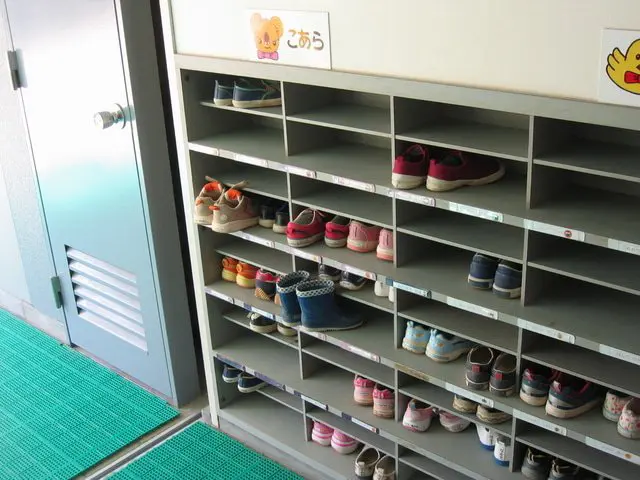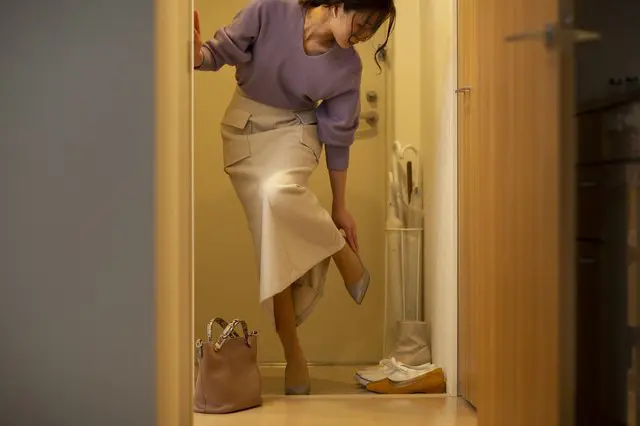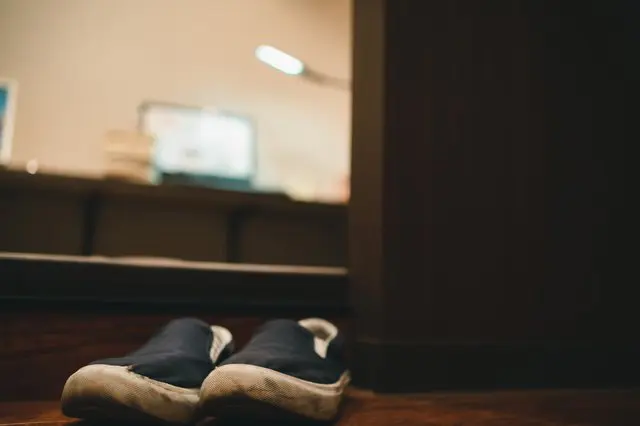Tips On When To Take Off Shoes In Japan

Why do the Japanese people take their shoes off indoors? We introduce here situations when you should take your shoes off, as well as situations when that is not necessary.
Although Japan is not the only country in the world where people take off shoes indoors, this custom is still one of the cultural shocks that some foreign visitors experience.
In this article, we will explain why people take off shoes indoors in Japan. We will also introduce ways to distinguish situations in which you should or should not take off your shoes.
Why Take Off Shoes?

Japan has a climate with high temperatures and high humidity. There is also a lot of rain. Entering the house with one's shoes on becomes a problem since it gets the floor dirty, causing sanitary problems. This is why it became a custom to take off shoes at the entrance to keep the house clean. In this manner, people are able to sit on the tatami or on the floor directly, and to lay out the futon (traditional bedding) on the floor.
Now, we will show you some tips to know where to take off shoes and the specific situations in which Japanese people take off shoes in daily life.
How To Tell Where To Take Off Shoes

You must almost always "take off shoes indoors". If there is a level difference between the entrance and the room, that means you should take off your shoes. Another way to know is whether or not there are slippers prepared.
You should line up your shoes at the edge of the lower side of the floor. If there is a kutsubako (shoe box) or a locker available, leave your shoes there. In this way, your shoes will not get in the next guest's way.
Situations When You Should Take Off Your Shoes
When Visiting Someone's House

When visiting someone's house, you should take your shoes off at the entrance. There is usually a level difference of between the entrance and the room. In apartments, the level difference may be only of several centimeters or there may be only a difference in floor colors to distinguish between the entrance and the room. Whatever the case, there is always a clear distinction. It is better to ask the owner if it is difficult to tell.
Keep in mind that even when you are wearing slippers that were prepared at the entrance, you must take them off when entering zashiki, a room floored with tatami.
Zashiki in Restaurants
There are restaurants in Japan with zashiki and horigotatsu (a type of seat with an opening in the floor to put one's legs; there is usually a low table above it). In these places, you must take off your shoes at the entrance or before you take a seat.
Zashiki is often seen in Japanese restaurants, in izakaya (Japanese-style bars), or old diners.
Just like in usual households, there is usually a level difference between the entrance and the room, so this serves as a sign to let you visitors know where to take off shoes. In restaurants with chairs and tables, however, most of the time you can keep your shoes on.
Other Situations

In most public places or large commercial buildings, you do not have to take off your shoes even if it is indoors. Yet, the following places are exceptions. Again, please pay attention to the level difference between rooms, as this will tell you where to leave your shoes.
Inside Shrines and Temples
Generally, one is not allowed to enter shrines or temples with shoes on. You should take them off when you go inside.
Traditional Stores
In traditional stores such as old kimono shops, customers sometimes need to leave their shoes at the entrance to take a look at the products.
Inside a Tea Ceremony Room
When you enter a tea ceremony room for sadō (or chadō, 茶道, Japanese traditional art in which one serves tea to the guests) in a kimono, you should wear white tabi (Japanese socks with the big toe separate). When you are in usual clothes, be sure to wear a white pair of socks before entering, as it is considered bad manner to show your toes.
Onsen and Sentō
Onsen (温泉, hot springs) and sentō (銭湯, public baths) are places where you clean your body. Therefore, you are not allowed to enter with your shoes on. You should take them off at the entrance.
In this article, we have introduced situations in which Japanese people take off shoes. In some countries that have the same custom, guests are considered an exception. However, in Japan, guests are also expected to take off their shoes in the above situations.
One of the fun things about traveling abroad is to discover cultural differences. For a pleasant stay in Japan, we recommend that you bring shoes that are easy to take off, and clean socks, just to be prepared for these situations.
Photos by Pixta
This is the official account of MATCHA's editorial department. Our articles feature useful travel information for visitors to Japan, from how-to guides to recommended places to visit.


































![[2026] Top 5 Strawberry Picking Spots in Tokushima, Naruto| Farms and Access Guide for January to May](https://resources.matcha-jp.com/resize/720x2000/2025/03/06-227165.webp)


